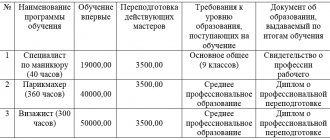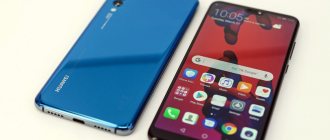Features of customs clearance
Customs clearance of laptops is carried out in strict accordance with the norms of customs law and the Customs Code of the Russian Federation. And the rules are such that it is not a batch of computer equipment that is declared, but each product unit (Article 180 of the Labor Code of the Russian Federation), a certificate of conformity and notification must be issued (the latter document must be obtained for equipment belonging to the category of encryption tools, and laptops, like all computer equipment) equipment, belong to encryption devices).
ATTENTION! We work only with legal entities.
Customs clearance procedures for computers, laptops and peripheral devices were tightened in 2006. Then it was decided to strengthen import controls in order to combat illegal products. Now each participant in foreign trade is required to obtain a one-time license, a certificate of conformity, a declaration of conformity, notification and declare each laptop.
Please note that by correctly filling out the documents, you can avoid many problems at customs and significantly speed up the registration process. Without the above papers, customs clearance of laptops is impossible; the goods will not be allowed through the customs border. Contact a customs broker to save time and nerves. With the participation of a customs representative, the procedure can be completed in a few hours.
When preparing for customs clearance, it is important to correctly determine the HS code. For laptops and other computer equipment, the valid code is 8471300000. The HS code determines the rate of import duty and VAT, which are calculated as a percentage of the value indicated in the declaration. Some countries enjoy preferences - various customs concessions, expressed in a reduction in the amount of customs duties. But you can take advantage of preferences only on the basis of a certificate of origin. Otherwise, payments are calculated on a general basis.
It is not recommended to artificially lower the customs value. Customs services set the entry price, so the cost of equipment below the minimum limit will raise suspicions. You will have to confirm the cost with checks or other documents. In addition, it may be adjusted upward or brought to justice.
HS codes
8471 - Computers and their units; magnetic or optical reading devices, machines for transferring data onto storage media in encoded form and machines for processing similar information, not elsewhere specified or included:
| 8471 | Computers and their units; magnetic or optical reading devices, machines for transferring data onto storage media in encoded form and machines for processing similar information, not elsewhere specified or included: |
| 8471 30 000 0 | - portable digital computing machines weighing no more than 10 kg, consisting of at least a central data processing unit, keyboard and display |
| — other digital computing machines: | |
| 8471 41 000 0 | - - containing in one housing at least a central processing unit and an input and output device, whether combined or not: |
| 8471 49 000 0 | — — other supplied as systems: |
| 8471 50 000 0 | - digital data processing units, other than those described in subheading 8471 41 or 8471 49, whether or not containing in one housing one or two of the following devices: storage devices, input devices, output devices: |
| 8471 60 | - input or output devices, whether or not containing storage devices in one housing: |
| 8471 60 600 0 | — — keyboard |
| 8471 60 700 0 | — — others |
| 8471 70 | - storage devices: |
| 8471 70 200 0 | — — central storage devices |
| - - other: | |
| — — — disk storage devices: | |
| 8471 70 300 0 | — — — — optical, including magneto-optical |
| — — — — other: | |
| 8471 70 500 0 | — — — — — on hard magnetic disks |
| 8471 70 700 0 | — — — — — others |
| 8471 70 800 0 | - - - magnetic tape storage devices |
| 8471 70 980 0 | — — — others |
| 8471 80 000 0 | - other computer devices |
| 8471 90 000 0 | - others |
(I) Machines for automatic data processing (computers) and their units
Information processing consists of various types of operations for processing information in predetermined logical sequences and for a specific purpose or purposes.
Computers are devices that, through logically interconnected operations performed in accordance with preset commands (programs), provide data that can be used as such or as input data for performing other information processing operations.
This heading includes computers in which the logical sequences of operations can be changed when moving from one type of work to another and the operation of which can be carried out automatically, that is, without manual intervention during the entire progress of the task. In most cases, these machines use electronic signals, but they may also use other technologies (such as pneumatic, fluid, or optical); some may use two or more of these technologies in combination with each other.
They can be made in the form of independent units with all the elements required for data processing located in the same housing, or they can be made in the form of systems consisting of a variable number of units located in separate housings.
Such machines are called digital, analog or hybrid (analog-digital), according to the method of data processing.
In addition, this heading also covers separately presented component devices for the automatic data processing systems described above.
However, the heading does not cover machines, instruments or apparatus that are combined with or operated in conjunction with a computing machine and perform a specific function. Such machines, instruments or apparatus are classified in the corresponding heading depending on the functions they perform, or, in the absence of a corresponding heading, in the residual headings (see part (E) of the Explanatory Notes to this group).
(A) COMPUTING MACHINES
Computing machines of this heading must be capable of simultaneously satisfying the conditions laid down in Note 5A(a) to this chapter. That is, they must be capable of: (1) Storing a program or processing programs and at least the information directly necessary for executing the program. (2) Be freely reprogrammable according to user requirements. (3) Perform user-defined arithmetic calculations. (4) Execute, without human intervention, a processing program that requires a computer to change actions by making logical decisions during processing. Thus, machines that operate only using fixed programs, that is, programs that cannot be changed by the user, are excluded, even though the user may be able to choose among several such fixed programs. These computers have the ability to store data and also store programs that can be replaced depending on the work being performed. Computers process data in encoded form. The cos code comes from a finite set of characters (binary code, ISO standard six-bit code, etc.). Data entry is usually done automatically, using storage media such as magnetic tapes, or by directly reading source documents, etc. Computers may also have provisions for manual input via a keyboard, or input may be carried out directly using some kind of instrument (for example, measuring instruments). With the help of input devices, input data is converted into signals that can be used by the machine and stored in storage devices. Some of the data and the program or programs may be temporarily stored in auxiliary storage devices, such as those using magnetic disks, magnetic tapes, etc. But these machines must be able to store in main memory, which can be directly accessed during the execution of a specific program and which has a capacity sufficient at least to store those parts of the processing program and translation programs, as well as data necessary directly for the current processing process. Computers may have a central data processing unit, an input device (for example, a keyboard or scanner) and an output device (for example, a visual display device) in one housing, or may consist of several individual units interconnected. In the latter case, the blocks form a “system” that contains at least a central data processing unit, an input device and an output device (see Note 1 to the subheadings of this group). A complete computing system must contain at least: (1) A central processing unit, which typically includes main storage, arithmetic, logic, and control elements; in some cases, however, these elements can be made in the form of separate blocks. (2) An input device that receives input data and converts it into signals suitable for processing by a machine. (3) An output device that converts the signals produced by a machine into understandable form (printed text, graphics, images, etc.) or encoded data for further use of this data (processing, control, etc.). Two of these devices (for example, input and output devices) can be combined in one block. The completed computing system is classified in this heading; however, one or more individual devices may be classified elsewhere when presented separately (see paragraph (B) Separately Presented Devices below). These systems may include remote input or output devices in the form of terminals. Such systems, in addition to input or output devices, may also include peripheral devices designed to enhance the capabilities of the system, for example, by expanding one or more functions of the central unit (see point (B) below). Such devices are connected between input or output devices (the start and end of the system), although interface and conversion devices (channel adapters and signal converters) can sometimes be connected before the input device or after the output device. Computers and systems are widely used, for example, in industry, commerce, scientific research and in public or private administrative institutions. (See paragraph (E) of the General Explanatory Provisions to Chapter 84 regarding the classification of machines containing or operating in conjunction with a computer and performing specific functions (Note 5(E) to this Chapter).)
(D) Separately presented devices
This heading also includes separately presented units that are components of a computer system. They can be made in the form of blocks having a separate housing, or in the form of blocks that do not have a separate housing and are intended for installation in a machine (for example, installation on the main board of a central data processing unit). Such blocks are the blocks that are defined in paragraphs (A) and (B) above and in the paragraphs below as parts of a complete system.
A block should be considered an integral part of a complete computing system if it performs a data processing function and satisfies the following conditions:
a) is used exclusively or primarily in a computer system;
b) has the ability to connect to the central data processing unit either directly or through one or more other units; And
c) capable of receiving or presenting information in a form (codes or signals) that can be used by the system.
If a unit performs a specific function other than data processing, it should be included in the heading corresponding to that function, or, if this is not possible, in the heading “other” (see note 5D to this group).
Connections can be made by tangible means (eg cables) or by intangible means (eg radio or optical communications).
In accordance with Note 5G to this group, printers, keyboards, X-Y - coordinate input devices and data storage units on disks that satisfy the conditions given in paragraphs (b) and (c) above, in all cases must be classified as components computing systems.
The above condition, however, must be read in full accordance with the context of Note 5 to Chapter 84 and can therefore be applied subject to the terms of paragraph (E) of that Note on the basis of the chapeau to paragraph (B) thereof. Thus, inkjet printers operating in conjunction with a computer but having, especially in terms of their size, technical capabilities and specific application, the characteristics of a printing machine designed to perform a specific function in the printing industry (for example, producing color proofs) should be regarded as machines having a specific function covered by heading 84.43.
In addition, equipment, such as measuring or control instruments, modified by the addition of devices (eg, signal conditioners) allowing them to be connected directly to a computer should not, in particular, be considered to be used exclusively or primarily in computer systems. Such equipment should be included in the appropriate headings.
A device may be included in this heading as a unit of a computing system only if it:
i) performs a data processing function;
ii) satisfies the criteria set out in Note 5B to this Chapter, including the introductory paragraph of that Note; And
iii) is not excluded in accordance with the provisions of Note 5D to this chapter.
If a device does not meet the criteria set out in Note 5B to this chapter or does not perform a data processing function, it must be classified according to its characteristics based on Basic Rule of Interpretation 1 and, if necessary, in combination with Basic Rule of Interpretation 3a.
Among the blocks under consideration are computer displays that provide a graphical representation of the processed data. They differ from video monitors and television receivers of heading 85.28 in a number of ways, including the following:
1. Computer displays are capable of receiving a signal only from the central processing unit of the computer and therefore cannot reproduce a color image from a complex video signal, the form of which corresponds to the television broadcast standard (MTSC, SECAM, PAL, D-MAC, etc.). They are equipped with connection devices typical for data processing systems (eg RS-232C interface, DIN or SUB-D type connection devices) and do not have an audio channel. They are controlled by special adapters (for example, monochrome or graphics adapters), which are part of the central data processing unit of the computer.
2. These displays are characterized by low levels of electromagnetic radiation. The distance between image elements on the screen is 0.41 mm at medium resolution and decreases as resolution increases.
3. To be able to present small images with good resolution, the displays of this heading use smaller pixel sizes and more stringent convergence standards than those used in video monitors and television receivers of heading 8528. (Convergence - the ability of an electron gun(s) to excite a single spot on the front surface of a cathode ray tube without affecting adjacent spots.)
4. In these displays, the video frequency (bandwidth), which is a measure of how many picture elements can be transmitted per second to form an image, is typically 15 MHz or more. At the same time, in the case of video monitors of heading 8528, the frequency bandwidth usually does not exceed 6 MHz. The horizontal scanning frequency of these displays varies according to standards for different playback modes, typically from 15 kHz to more than 155 kHz. Many of them are capable of operating at multiple horizontal scanning frequencies. The horizontal scanning frequency of video monitors of heading 8528 is fixed and is usually 15.6 or 15.7 kHz depending on the television standard used. In addition, computer displays do not operate in accordance with national or international broadcast frequency standards for public service television or closed circuit television frequency standards.
5. Displays included in this heading often have tilt and swivel mechanisms, anti-glare surfaces, glare-free screens and other ergonomically optimized features that facilitate extended viewing time at short distances.
In addition to central processing units and input and output devices, examples of such devices are:
1. Additional input and output devices (printers, plotters, input/output terminals, etc.).
2. Additional storage devices external to the central processing unit (magnetic card drives, magnetic or optical disk storage devices, autoloaders and tape libraries, optical disk library drives (sometimes called "automatic changeable optical drives") disks"), etc.). This category also includes additional storage devices, known as "proprietary format storage devices", either for installation within a computing machine or for external use with such machines. The devices may be in the form of disk drives or tape drives.
3. Additional devices that expand the capabilities of the central data processing unit (for example, floating point arithmetic units).
4. Control and interface devices of the type that provide interconnections between the central processing unit and other computers or with groups of input or output devices, which may include visual display devices, remote terminals, etc.
This category includes network routers, bridges and hubs used to manage and address messages between machines on a local area network (LAN), as well as repeaters, which receive, process (by regenerating and retiming) and transmit data circulating in within the LAN system. This category also includes interlink adapters used to connect two digital systems (for example, two LAN networks) to each other.
5. Signal conversion devices. When applied at the input, these devices enable the machine to sense external signals, and when applied at the output, they convert the output signals that are the result of processing carried out by the machine into signals that can be used by external devices. This category includes fiber optic converters that are used in LAN.
6. X-Y coordinate input devices, which are devices for entering positional data into computers. These devices include: mouse, light pen, joystick, trackball and touch screen. A common feature of these devices is that their input data is, or is interpreted as, position data relative to some fixed point. They are typically used to control the position of the cursor on a visual display device, as a replacement or complement to the cursor keys on the keyboard. For example, a mouse contains a ball and sensors that detect the movement of the ball in two directions. Moving the mouse on a flat surface causes the ball to rotate. The direction of rotation is determined by the sensors as movement along two coordinate axes and is output as X- and Y-coordinates corresponding to the components of left-right and forward-backward movement. In addition, the mouse has several keys that can be used to make selections in the same way as when pressing a key on a regular keyboard. Also included in this category are graphics tablets, which are X-Y coordinate input devices that allow record and trace the coordinates of a curve or any other geometric shape. These devices typically consist of a rectangular tablet with an active touch surface, a pointer or stylus for drawing, and a crosshair attached to a magnifier to allow data entry. Also included in this category are digitizers that perform functions similar to those of graphics tablets. However, while graphics tablets are used to create original drawings and drawings, as well as to select application menus and manipulate the displayed object, digitizers are typically used to input drawings into the machine that only exist as a hard copy. Digitizer pointing devices can be of any kind, but must be small enough to be held by hand and moved along the (active) touch area of the digitizer. Crosshair cursors are the most common type.
(II) Magnetic or optical reading devices, machines for transferring data onto storage media
in encoded form and machines for processing such data,
not specified elsewhere
This class includes a wide range of machines, many of which are electromagnetic or electronic and which usually complement each other, finding common use in systems for the preparation of statistical reports, or for performing accounting or other operations.
This group includes magnetic or optical reading devices, machines for transferring data to storage media in encrypted form, as well as machines that process data and decode the resulting result.
This includes only those machines that were not listed in any other headings. Therefore, this heading does not cover, for example:
(a) Machines and devices for automatic information processing described in part (I) above, other than bar code readers.
(b) Automatic writing and word processing machines (heading 8469).
(c) Calculating machines, analytical calculating machines and cash registers of heading 8470, from which the machines included in this group differ in that they do not have manual input devices, but receive data exclusively in encoded form (on punched cards or punched tape, on magnetic tape, etc.).
(A) Magnetic or optical reading devices
Magnetic or optical readers read characters, usually represented in a special form, and convert them into electrical signals (impulses) that can be directly used by machines to transcribe or process the encoded information.
(1) Magnetic readers. In accessories of this type, characters printed with a special “magnetic” printing ink are magnetized, and then they are converted into electrical impulses using the magnetic head of the reading device. Therefore, they can be identified either by comparison with data recorded in the machine's memory or by a digital code, usually binary.
(2) Optical reading devices. They do not require the use of special printing ink. The characters are read directly using a series of photoelectric cells, and their conversion is carried out according to the principle of a binary code.
This product group also includes barcode readers. These machines typically use light-sensitive semiconductors such as laser diodes and are used as input devices when interfaced with automatic machines.
data processing or with other machines, for example, cash registers. They can be hand-held, placed on a table, or mounted on a machine.
Reading devices discussed above are classified in this heading only if presented separately. When such reading devices are combined with other machines (for example, machines for translating data into storage media in encoded form and with machines for processing such data in encoded form), they are classified with these machines, provided that they are presented together.
(B) Machines for transcribing data onto storage media in encoded form
This group includes:
(1) Card or tape punches and magnetic tape encoders. These machines perform the first operation in the data processing cycle. They are used to translate in encoded form (perforations, magnetization spots, etc.) those data that must be used during subsequent processing operations.
Most of these machines have a manual keyboard, but some receive information in the form of electrical impulses from a magnetic or optical reader, or some other suitable device.
(2) Controllers. These machines are used to verify the accuracy of encoded data translated into various types of storage media. For example, when using a punched card inspector, the work performed by the card puncher is repeated by another operator in order to identify errors and reject punched cards that have errors.
(3) Machines for transferring encoded information from one medium to another. These machines can be used either to transfer encoded information from one type of storage medium to another type (for example, from punched cards to magnetic tape or vice versa), or to transfer information to another medium of the same type. The last category includes reproducing machines, which are used to reproduce all or only part of the data on master punched cards or on a master punched tape by making new punched cards or punched tape.
(4) Machines for entering fixed programs into integrated circuits (programmers). These machines are designed to transmit in encoded form information or information contained in the internal memory of programmers built on integrated circuits.
Some programmers have an additional feature (emulator) that allows the user to graphically display the programming results before inserting the program into the integrated circuit.
(B) Machines for processing information, decoding and presenting the result in clear text
This includes:
(1) Calculators that automatically perform more or less complex arithmetic operations on encoded data on a medium input into the machine and present the results obtained also in encoded form. Calculating machines working with punched cards
tami, punch holes on the same punched cards or on the last punched card in each series, thereby presenting the results obtained in the form of additional holes.
(2) Readers that decode data prepared in its original form on punched cards or punched tape. This type includes interpretive machines that usually print along the edge of a punched card all or some of the data corresponding to the holes punched on the punched card.
Parts and Accessories
In accordance with the general provisions concerning the classification of parts (see General provisions of the Explanatory Note to Section XVI), parts and accessories for machines of this heading are classified in heading 84.73.
***
This heading does not include:
(a) Machines for punching holes or edge cuts in cards or documents for the purpose of easily indexing them (heading 84.72).
(b) Stabilized power supplies (usually heading 8504).
(c) Modulator-demodulator devices (modems), which modulate information received from computers, presenting it in a form suitable for transmission over a telephone network, and convert it back into digital form (commodity item 8517).
(d) Electronic integrated circuits and microassemblies used as central data processing units (known as "microprocessors"), as storage devices, etc. (heading 8542).
(e) Flight simulators (for example, heading 8805).
Explanations for subheadings
Subheading 8471 30
This subheading includes portable digital automatic data processing machines, the case of which may have a handle and the weight of which does not exceed 10 kg. These machines, equipped with a flat screen, are able to operate without an external electrical power source and often have an acoustic modem for connecting to the network.
Subheading 8471 90
This subheading includes, inter alia, disk optical systems, which typically include keyboards, displays, optical disk drives, scanners and printers. These systems may include a computer as a controller, or they may be configured such that they can be accessed or controlled by the computer. These systems typically perform the following functions:
— image recording by electronic scanning,
- storing data in memory,
- data extraction,
— data display,
— printing on plain paper.
Optical disks used in these systems as a recording medium for various types of information, such as texts or graphics, can store a huge amount of information and specific parts of the stored information can be accessed and retrieved in a short time.
Explanations for subheadings
8471 70 300 0
See additional note 2 to this chapter.
Receiving notification
Notification is issued at the Center for Licensing and Information Protection of the FSB. This document provides complete information about laptops, including performance specifications. The notification form is standardized. After issuance, the information appears on the official website of the Economic Commission of the Customs Union.
To receive a paper, you must submit an application and indicate:
- name of the equipment;
- purpose;
- technical specifications;
- information about the manufacturer;
- information about the applicant.
Laptop certification
Products classified as portable personal computers must be certified. Certification is carried out taking into account the requirements set out in particular in the TR CU RF “On the safety of low-voltage equipment”. As part of the procedure, laptops will be checked for compliance with safety, quality, and electromagnetic compatibility requirements.
Note! The certificate is issued for a period of 1 to 3 years. The product can be checked randomly or every unit.
A package of documents will be required:
- statement;
- technical conditions;
- copies of statutory documents and more.
Each laptop should have information, often in the form of a sticker, indicating the brand, serial number, current and power, and protection class.
HS code: 8471300000 computers - laptops ((8471300000))
8471300000
CONTROL DISPLAY P/N 4058650-931, SERIAL NUMBER 94062353 - 1 PCS, USED, PART OF THE FLIGHT CONTROL SYSTEM, PROVIDES COMMUNICATION BETWEEN THE PILOT AND THE FLIGHT CONTROL COMPUTER FOR THE BOEING 757-2 00 VP-BFG, NON-MILITARY PURPOSE, MARKING 108-1397 2545
Having a problem? Call our customs specialist:
Moscow and region (call is free)
Saint Petersburg
8471300000
PORTABLE COMPUTING MACHINES WITH WEIGHT NOT MORE THAN 10 KG, CONSISTING AT LEAST OF A CENTRAL DATA PROCESSING UNIT, KEYBOARD AND DISPLAY.
8471300000
NOTEBOOKS: SERIAL NUMBERS: LUSAL0D2839493E30F1601 LUSAL0D2839493E34A1601 LUSAL0D2839493E4951601 LUSAL0D2839493E49B1601 LUSAL0D2839493E4A21601 LUSAL0D28 39493E5331601 LUSAL0D2839493E8DD1601 LUSAL0D2839493E9121601 LUSAL0D2839493E91D1601 LUSAL0D2839493E9
8471300000
NOTEBOOKS: SERIAL NUMBERS: LUSAQ0D16594942BB11601 LUSAQ0D16594942BDF1601 LUSAQ0D16594942C8E1601 LUSAQ0D16594942CA11601 LUSAQ0D16594942D391601 LUSAQ0 D16594942DAD1601 LUSAQ0D16594942E911601 LUSAQ0D16594942F491601 LUSAQ0D16594942F801601 LUSAQ0D16594942F
8471300000
NOTEBOOKS: SERIAL NUMBERS: LUSAS0D184950026D01601 LUSAS0D1849500360A1601 LUSAS0D1849500372A1601 LUSAS0D1849500419E1601 LUSAS0D184949276D61601 LUSAS0D18 4949276DC1601 LUSAS0D184949276E51601 LUSAS0D184949276EA1601 LUSAS0D18494931ABE1601 LUSAS0D184950000
8471300000
NOTEBOOKS: SERIAL NUMBERS: LXECS03001949071EF2516 LXECS03001949071F02516 LXECS03001949071F12516 LXECS03001949071F22516 LXECS030019520F5B82516 LXEC S030019520F5B92516 LXECS030019520F5BA2516 LXECS030019520F5CE2516 LXECS030019520F5D42516 LXECS030019520F5
8471300000
NOTEBOOKS: SERIAL NUMBERS: LXFRC02160951157452510 LXFRC021609511577E2510 LXFRC021609511577B2510 LXFRC02160951157712510 LXFRC02160951157872510 LX FRC02160951157652510 LXFRC02160951157622510 LXFRC02160951157552510 LXFRC02160951157472510 LXFRC02160951157
8471300000
NOTEBOOKS: SERIAL NUMBERS: LXN740100195324F9F1601 LXN740100195324FBE1601 LXN7401001953250371601 LXN7401001953255E41601 LXN74010019532573B16 01 LXN7401001953257BC1601 LXN74010019532591C1601 LXN740100195325AB21601 LXN74010019532432B1601 LXN7401001953246
8471300000
NOTEBOOKS: SERIAL NUMBERS: LXN800100195048C431601 LXN800100195048C7F1601 LXN800100195048C831601 LXN800100195048C871601 LXN800100195048C891 601 LXN800100195048C911601 LXN800100195048C931601 LXN800100195048C991601 LXN800100195048C9C1601 LXN800100195048C
8471300000
NOTEBOOKS: SERIAL NUMBERS: LXN80010019524A9F41601 LXN80010019524BD8D1601 LXN80010019524BDEB1601 LXN80010019524CEAA1601 LXN80010019524D7F71601 LX N80010019524DBC11601 LXN80010019524E1EB1601 LXN80010019524E2301601 LXN80010019524E5E11601 LXN80010019524F2
You can find additional information on the topic in the Unified Customs Tariff section. Section XVI.
Free consultation by phone:
Moscow and region (call is free)
Saint Petersburg
Attention! Due to recent changes in legislation, the legal information in this article may be out of date!
Our specialist will advise you free of charge.





